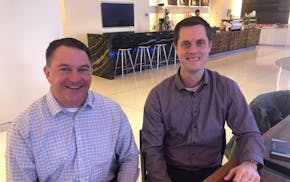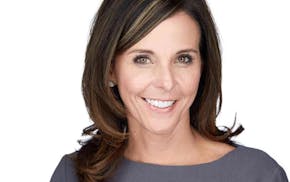Neel Kashkari, president of the Federal Reserve Bank of Minneapolis, and others at the Federal Reserve, which traditionally has focused on inflation and unemployment data when thinking about interest rates, increasingly are looking at the effect of racial and economic disparities on individuals and the economy.
On Wednesday, the Minneapolis Fed is hosting a half-day roundtable for employers that will focus on opportunities to improve employee financial well-being.
A recent study by MetLife said one in five employees admitted they skipped work to focus on a financial problem. And many say they lack enough savings and have difficulty meeting monthly family expenses.
This comes against the backdrop of the Trump administration's proposed tax cuts that critics say favor the wealthy and business and will increase federal budget deficits.
The counter-argument says tax cuts should be targeted at people in households with incomes of under $100,000. Those people spend virtually all of their money and need to save more for retirement, economists say.
The affluent have done the best getting richer since the 1970s as wealth has concentrated markedly among the top 10 percent or so of Americans. Those on the lower end of pay also are disproportionately minorities.
Despite a nice across-the-board rise in incomes in 2016, by far the best since the end of the 2008-2009 Great Recession, the richest 1 percent of households controlled 38.6 percent of total wealth in 2016, up from 36.3 percent in 2013, and from about 30 percent in 1990, according to Federal Reserve statistics. Meanwhile, the bottom 90 percent of households controlled 22.8 percent of all wealth, down from more than 30 percent in 1990.
Stagnating wages and wealth have meant more stress on the working class, say the psychologists and nonprofit financial groups that work with many of them on financial issues. They effectively are making do with less. The working class is increasingly part-time and temporary workers with fewer benefits.
"They have less money to work with," said Ray Boshara, director of the Federal Reserve Bank of St. Louis' Center for Household Financial Stability and one of the participants in this Wednesday's meeting. "Their incomes have been flat or less for 40 years. And the incomes are more volatile.
"Low-income families are quite good at managing money because they have to be frugal and manage volatility. I think people who can't manage money go up and down the income spectrum."
Other participants Wednesday will include the Greater Twin Cities United Way, the Minnesota Chamber of Commerce and Prepare + Prosper, a nonprofit organization that works with low-income people and financial institutions on financial capability and management, including tax preparation and access to financial services.
"There are several reasons to take the next steps in collaboration [with employers]," said Tracy Fischman, executive director of Prepare. "We have a low-income customer base, around $16,000, but we see households of up to $60,000, and we see more volatility in hours; people working two jobs and sometimes less benefits.
"They often are not banked and turn to payday lenders and check cashiers. Some spend $1,000 to $2,000 a year in interest and fees. They need help."
Two Minnesota businesses, SJE-Rhombus, a manufacturer of pump control solutions based in Detroit Lakes, and New Horizon Academy, a Twin Cities childhood education and day care provider, will share how they have tried to improve their employees' financial health.
SJE-Rhombus has helped employees increase retirement savings through an employee stock ownership plan, or ESOP, on top of pay and benefits. Some economists say that such programs are the best way to increase worker wealth. As well, companies with ESOPs tend to perform well because of reduced turnover.
New Horizon Chief Executive Chad Dunkley said the company pays aides $10 to $12 an hour and teachers $15 to $22 an hour. It offers other financial assistance through tuition reimbursement, internal advancement and discounting the cost of day care for employees' kids at their centers.
"Many of our client families are also stretched," Dunkley acknowledged. "We do what we can to help. And we want to do more."
But he said there's also a role for policymakers. "We need help through tax policies," he said. "In Minnesota, the average public school has 23 kids per teacher. I need six for 23 kids. Most of our parents can't afford more but our staff deserves more. Many of our teachers have college and graduate degrees.
"It's important. Ninety percent of brain development occurs before [age] 5."
Neal St. Anthony has been a Star Tribune business columnist and reporter since 1984. He can be contacted at nstanthony@startribune.com.

St. Anthony: 'Patient' investing paying off for St. Paul's Hill Capital

Jennifer Smith, leader of Burnsville's Innovative Office Solutions, has died

St. Anthony: Medical professions in Minnesota need more people of color in their ranks



